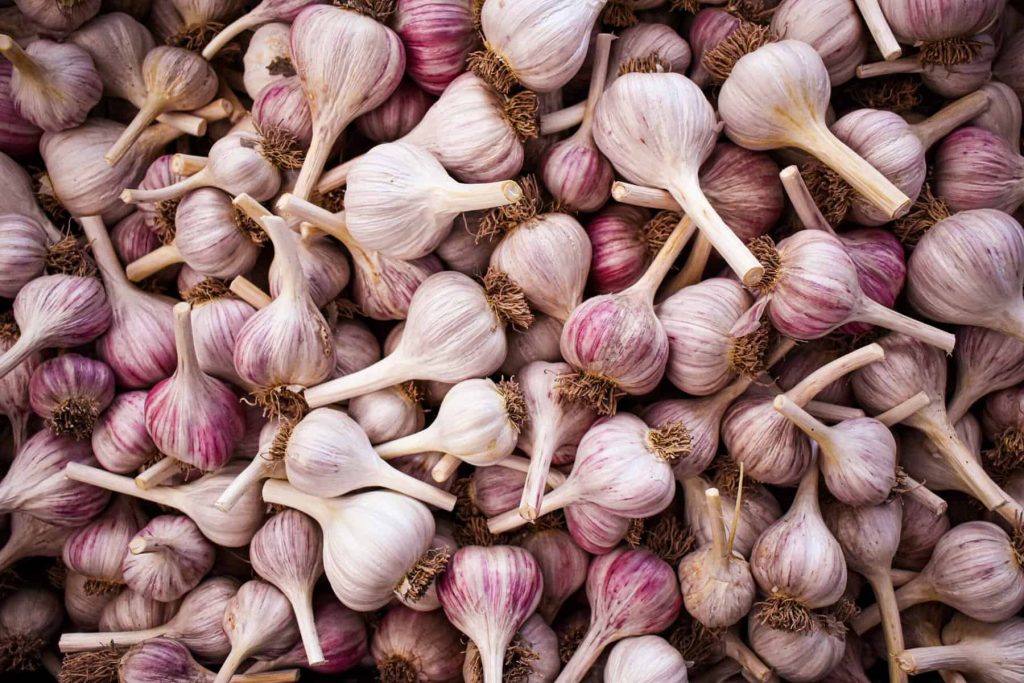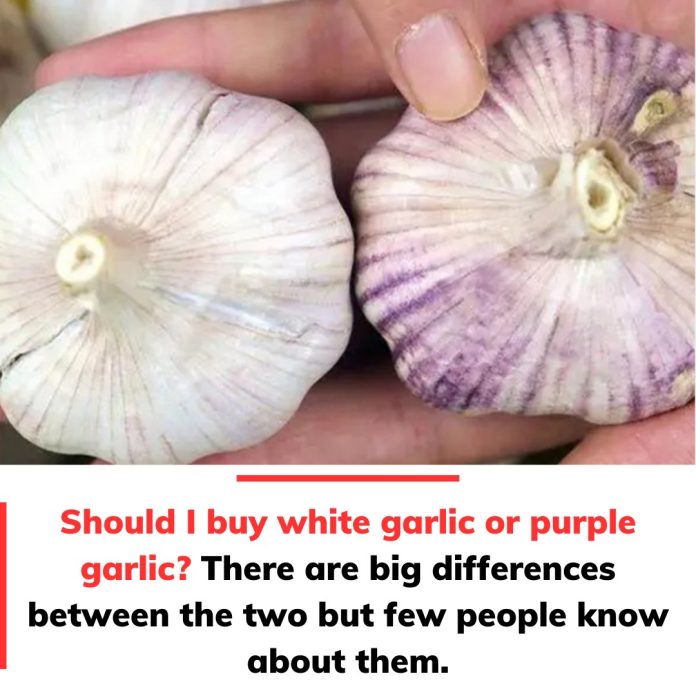Garlic is a fundamental ingredient in culinary traditions worldwide, renowned for its distinctive flavor and numerous health benefits. When selecting garlic, consumers often encounter two primary varieties: white garlic and purple garlic. Understanding the differences between these types can enhance your cooking and inform your purchasing decisions.
Varietal Classifications
The primary distinction between white and purple garlic lies in their botanical classifications:

- White Garlic (Softneck Garlic): Predominantly found in supermarkets, white garlic belongs to the softneck variety. It is characterized by a flexible stalk that doesn’t extend through the bulb’s center, allowing for traditional braiding. Each bulb contains multiple cloves of varying sizes, with larger ones on the outside and smaller ones nestled within. Softneck garlic is favored for its hardiness, ease of cultivation, and extended shelf life, making it a staple in commercial distribution.
- Purple Garlic (Hardneck Garlic): Recognizable by its purple-tinged papery skin, purple garlic falls under the hardneck category. It features a rigid, woody stalk that grows through the bulb’s center, around which uniform-sized cloves are arranged. This variety is often found in specialty and farmers’ markets and is appreciated for its unique characteristics.
Flavor Profiles and Culinary Applications
The flavor nuances between white and purple garlic can influence their culinary uses:
- White Garlic: Known for its robust and intense flavor, white garlic imparts a strong garlicky presence to dishes. Its assertiveness makes it suitable for recipes where a pronounced garlic taste is desired, such as in hearty sauces, roasted meats, and stir-fries. The pungency of white garlic can withstand longer cooking times, allowing its flavor to permeate dishes thoroughly.
- Purple Garlic: In contrast, purple garlic offers a milder, more subtle flavor profile with hints of sweetness and a slight peppery bite. This gentler taste makes it ideal for raw applications or dishes where garlic’s presence should be complementary rather than dominant. Examples include salad dressings, aiolis, and lightly sautéed vegetables. The delicate nature of purple garlic allows it to enhance dishes without overpowering other flavors.
Nutritional Content and Health Benefits
Both garlic varieties are celebrated for their health-promoting properties, though subtle differences exist:
- Allicin Content: Purple garlic tends to have higher levels of allicin, the compound responsible for garlic’s characteristic aroma and many of its health benefits, including antibacterial and antioxidant effects. This increased allicin content contributes to purple garlic’s slightly spicier taste and enhanced therapeutic properties.
- Selenium and Germanium: White garlic contains higher concentrations of selenium and germanium, minerals known to support immune function and possess anti-cancer properties. These elements contribute to the overall health benefits of white garlic, making it a valuable addition to a balanced diet.
Storage and Shelf Life
The structural differences between softneck and hardneck garlic influence their storage capabilities:
- White Garlic: With its tightly layered cloves and absence of a central stalk, white garlic boasts a longer shelf life, often lasting up to 8-12 months when stored properly in a cool, dry place with good ventilation. This longevity makes it a practical choice for stocking up and regular use.
- Purple Garlic: The looser structure and higher moisture content of purple garlic result in a shorter shelf life, typically around 4-6 months. To maximize freshness, it’s advisable to use purple garlic relatively quickly or preserve it through methods like pickling or making garlic paste.

Market Availability and Selection Tips
Availability of these garlic varieties can vary:
- White Garlic: Due to its durability and ease of cultivation, white garlic is widely available year-round in most grocery stores. When selecting, choose bulbs that are firm, with unbroken skins and no signs of sprouting or mold.
- Purple Garlic: Often found in specialty stores or farmers’ markets, purple garlic may be more seasonal and region-specific. Look for bulbs with vibrant purple streaks, indicating freshness, and ensure the cloves are plump and free from blemishes.
Conclusion
Both white and purple garlic offer unique attributes that can enhance various culinary creations. Your choice between the two should consider factors such as desired flavor intensity, intended use, storage needs, and nutritional preferences. Incorporating both varieties into your cooking repertoire allows you to tailor dishes to specific taste profiles and health benefits, enriching your overall culinary experience.

















